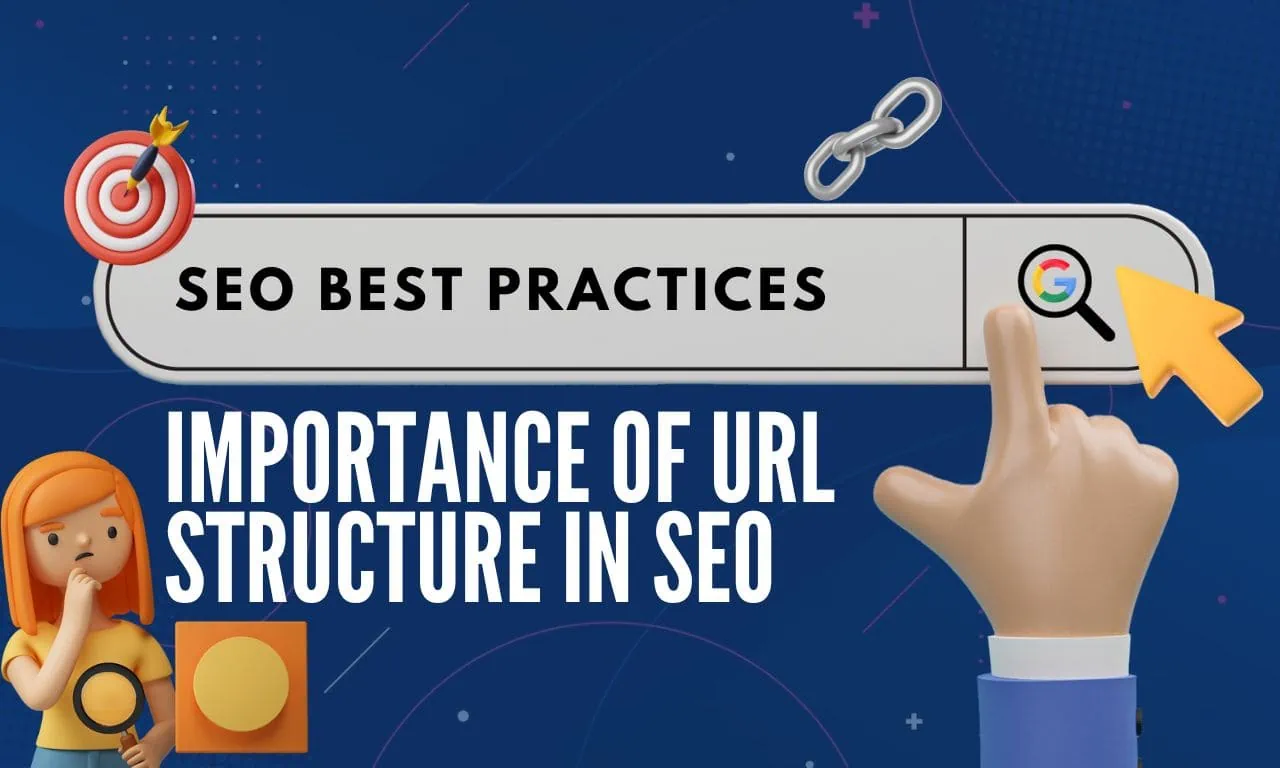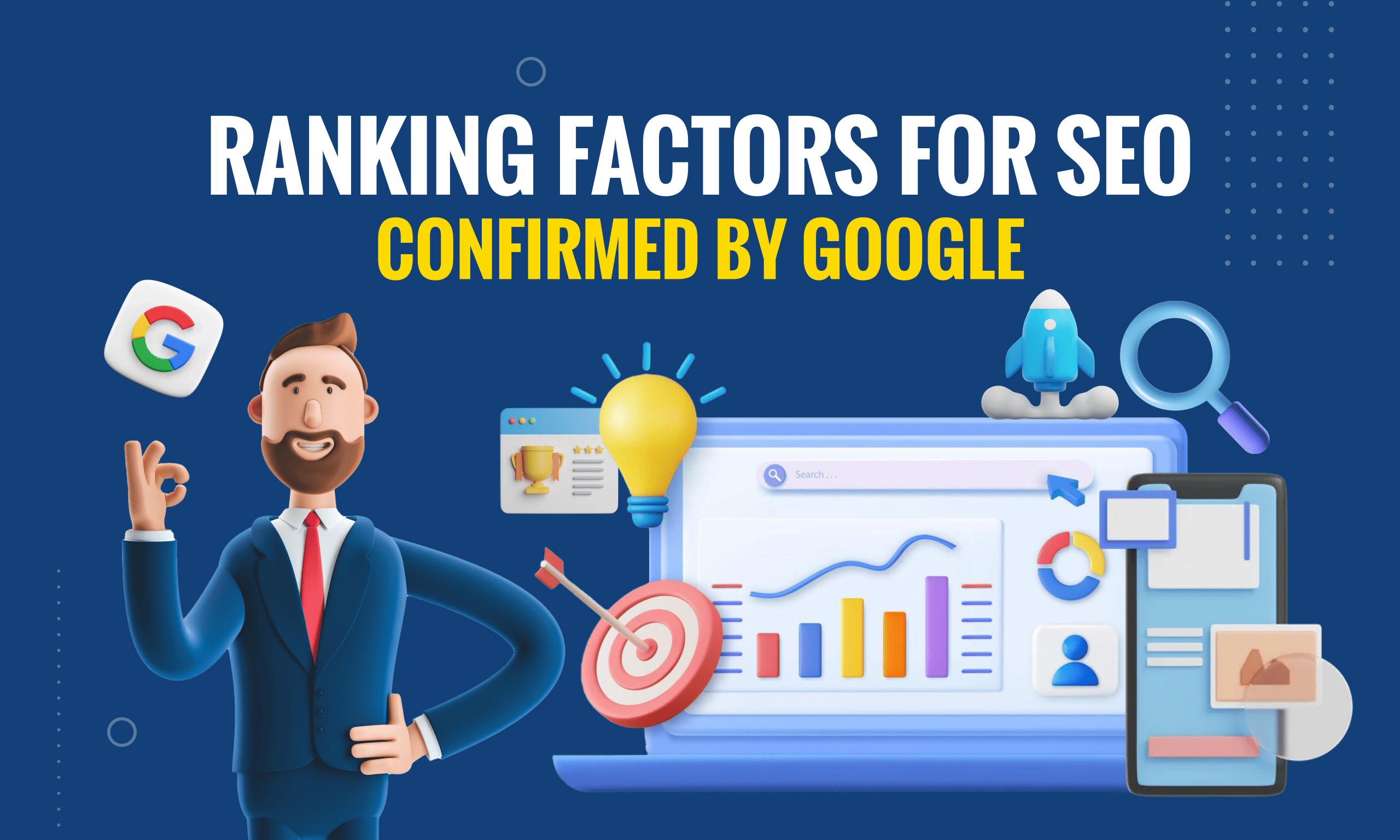In psychology, a person’s “intent” can be powerful. When presented with the right information and opportunity, this “intent” can turn into “action”.
That’s why many marketing materials, such as email campaigns, landing pages, and brochures, use Call-to-Actions (CTA) to nudge buyers to make a purchase.

So if you want someone to take action—like buying a TV from your website—you need to give them all the information they need, and include signals (CTAs) for them to make the final purchase decision.
This principle applies equally to SEO. By carefully considering the user's search intent and crafting content that resonates with their desires, you can not only attract clicks but also enhance your website's chances of ranking on the coveted page 1 of Google. Let's delve further into the secrets of satisfying this search intent.
What is Search Intent?
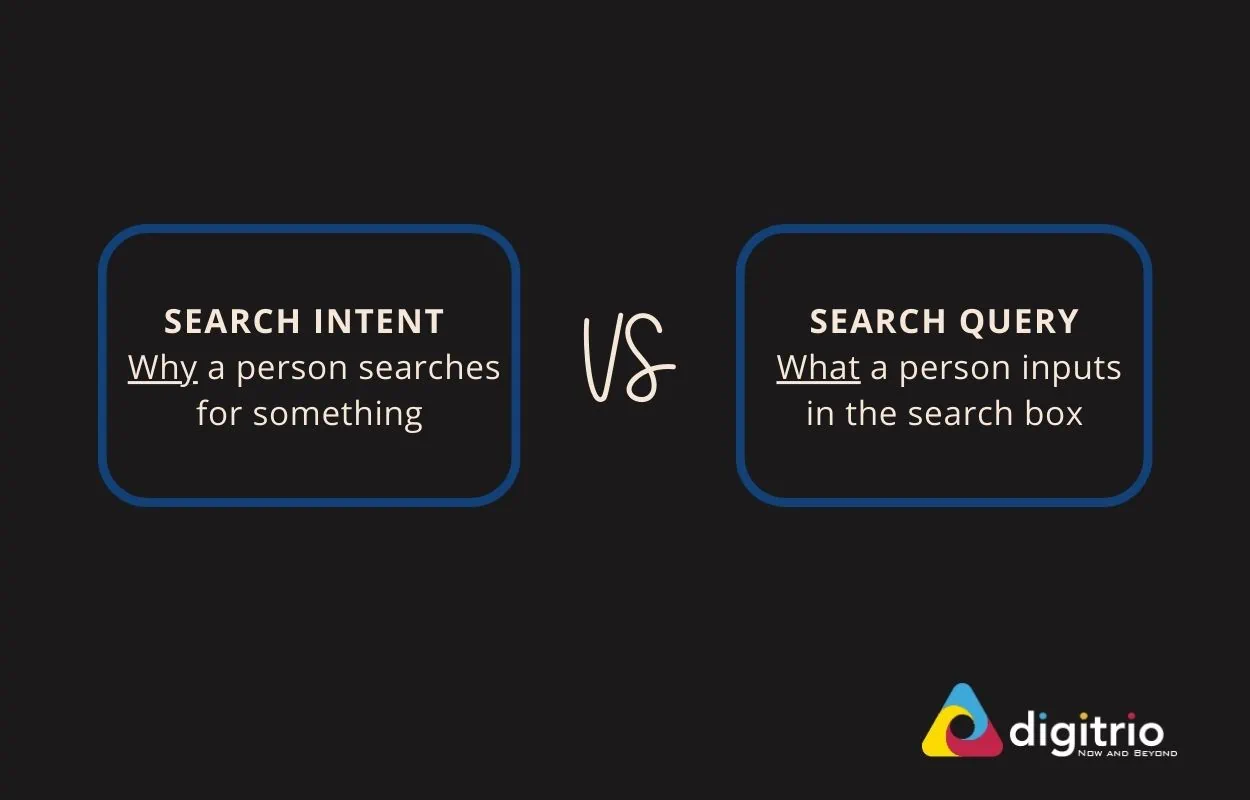
Search intent is the reason why a user inputs specific search terms on Google. So when a person searches for something, they have a specific reason for their choice of words.
This should not be confused with a search query, which is what a person types into Google's search box. They are words and phrases, such as "sneakers" or "running shoes".
For example, if you are looking to buy a new pair of sneakers because your old shoes are too worn out (search intent), you might search for "sneakers" or "new sneakers" (search queries).
What are the 4 Types of Search Intent?

Now that you know the difference between search intent and queries, you might be thinking: do people have different search intent? Of course, we all have different reasons for looking up information on search engines.
Generally, we can these 4 types of user intent to understand why people search the way they do:
- Informational
- Navigational
- Transactional
- Commercial
1. Informational
Informational search intent means the user is looking for informational content.
This could also be in-depth research, common among people looking to buy something or to learn more about something they're interested in.
The search queries might not always be formulated as questions. These users will usually type informational keywords such as "How to".
2. Navigational
Navigational search intent means the user wants to go to a specific website or page on the Internet quickly.
They might type navigational keywords such as "login" or "location". They already know what they're looking for and where they want to land but might not know the URL of the website.
3. Transactional
Transactional search intent is when the user seeks information to complete a transaction.
They already know what they want to buy, including the nitty-gritty details such as the brand and the product name. So all they're doing is looking for a website where they can purchase it. They'll put transactional keywords such as "buy XYZ" to get to the purchase.
4. Commercial
When a consumer knows that they need a specific product or service but cannot decide on which one, they'll need to investigate and compare several different types before making a final decision. That's what we call a commercial search intent.
This person is most likely searching for any reviews or comparison guides so they can decide on what they want.
Of course, there might be mixed search intent in which users want to perform a search for more than one reason.
Mixed search intent simply means that the searchers could have a lot of different needs in mind when using a single keyphrase.
Keep in mind that any search term is based on human behaviour, and so you, the marketer, might not have the same intent in mind as the searcher for the same key phrase. Continue reading to find out how to identify keyword intent for better on-page SEO.
Why is Search Intent Important for SEO?
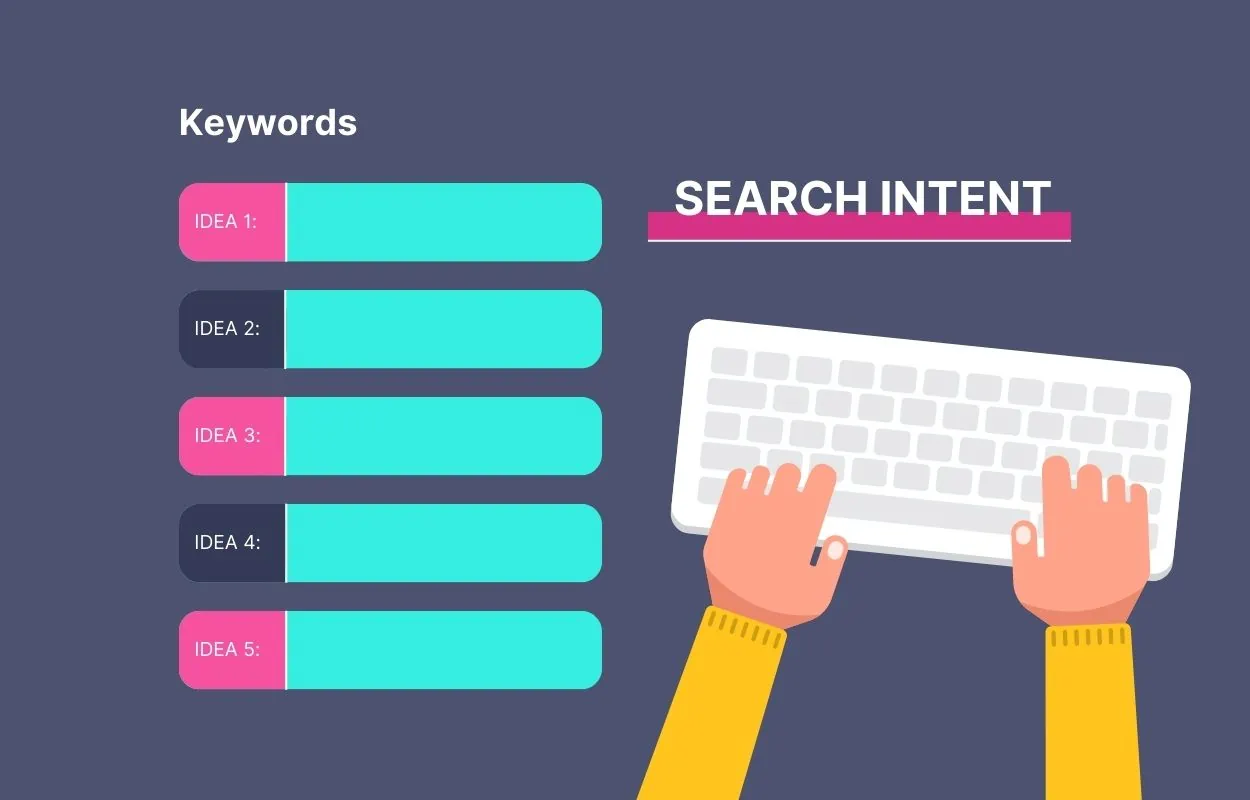
First, to understand why search intent is essential for SEO, we have to see things from Google's perspective.
If a user looks for something on Google but can't find the right answer, it reflects poorly on them. In other words, it looks as if Google was unable to help the user (and they might switch to other ways to search for information). Therefore, it makes sense that Google cares about the user experience and would aim towards fulfilling user intent.
For that reason, search intent can help us accurately interpret the user's needs, and determine which target keywords and content to use for SEO. This will then help to attract more organic traffic.
Second, the specific type of search intent also affects SEO metrics.
Whether organic or paid, you must align search queries to search intent for your website to rank higher. Research has found that for the top 5 search results, search queries optimised for informational intent have a 69% click-through rate compared to transactional keywords.
Therefore, marketers must consider what content their customers expect when they search online and align it to the user intent.
How Do You Figure Out Search Intent?
1. Do a Google Search
One mistake people usually make is creating an SEO strategy with transactional search terms for their product pages or service pages.
But their target audience's search intent is informational. The reverse can also occur; perhaps audiences are looking to purchase (transactional), but what appears is an informative page.
To avoid this, use a keyword research tool to find words and phrases you want to target. Then, carry out a Google Search using your keywords and look at what other sites are doing. If you see that majority of the web pages appearing on page 1 are How-To Guides (informational intent), it tells you that people are searching for informative types of content.
2. Deep Dive Into Google's Results
You can do a deep dive into Google's Search Engine Results Page (SERP) by paying attention to these features: "People also ask" questions, and "Related searches".
These sections will reveal what topics users search beyond the keyword. For instance, if you're dealing in used cars, you might type in "used cars seller".

This is what you'll see in "People also ask". This tells you that people's search intent is looking for an affordable used car, and most want to sell their used cars, not buy one. So if you're a used car dealer, here is where you might want to focus your content strategy.
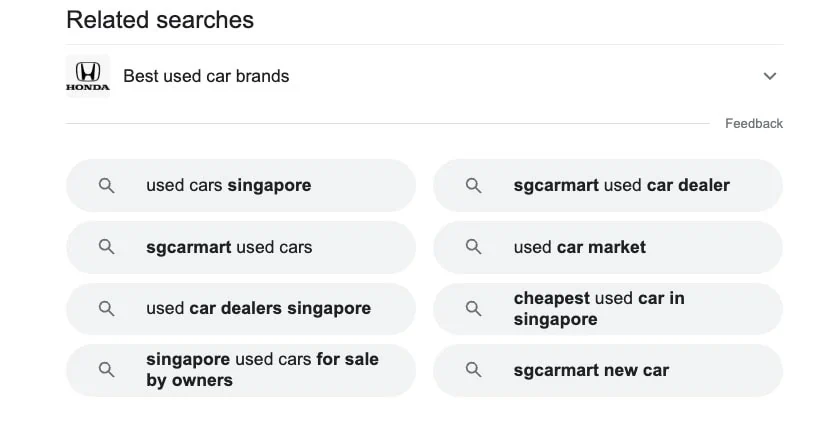
In "Related searches", you'll also see that most people are interested in finding out about the cheapest cars or looking for used cars on a certain platform (Sgcarmart).
These SERP results reveal the user's intent and show you possible questions to answer in your content, potential competitors, and more specific long-tail keywords to target.
3. Keep Up With Trends
For a good SEO strategy, it's important to know what topics are trending.
By looking at the current demand, you can understand what consumers want. This also helps you perform more targeted keyword research and create relatable content, which will engage consumers and encourage them to purchase your product.
One example of how this works is seasonal SEO. Seasonal search intent varies depending on the season, and you can use it to help your site get higher rankings during certain times of the year.
For example, if you sell Christmas decorations online, you may want your site to appear higher in Google's results during December than at other times of the year. By using keywords related to the holidays, you'll optimise your website for seasonal search intent.
How to Create Good SEO Content Based on Search Intent?
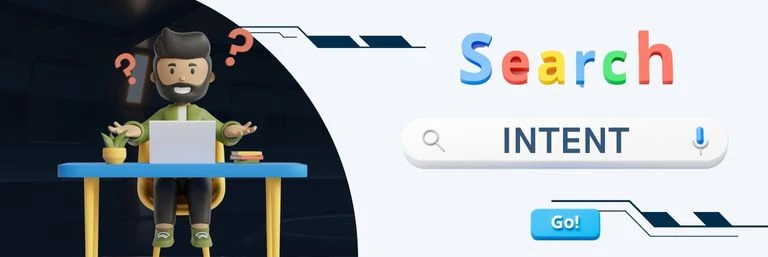
Once you’ve figured out the user intent, your next task will be to create a content strategy to satisfy the user’s needs. It's important to know that you may need to create different content for different search intents.
For instance, if you have identified that a user has transactional intent, then you'll need to send them to a sales or landing page. That way, they can purchase the product quickly.
But if they have informative intent, send them to a blog page with more content on the product or service. You'll also need to ensure that your metadata, such as your page title, meta description, and image alt-tags, are optimised for search intent.
Take Action with Search Intent
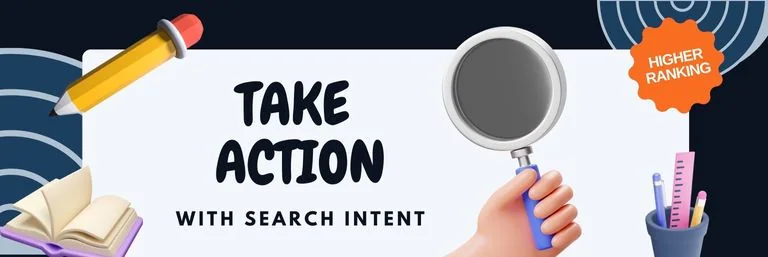
Ultimately, search intent is important because it has the potential to drive action.
Search intent not only helps content marketing teams identify demand, assess suitable content, and design an appropriate strategy. Such content is also more likely to drive relevant traffic to your website, attract clicks, and rank higher on search engines.
If you're interested in SEO services, contact us to learn how you can do so. We practice what we preach—Digitrio uses search intent to create an SEO content marketing strategy for businesses.



